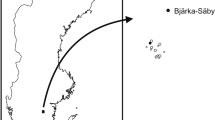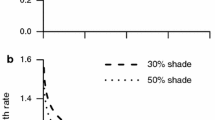Abstract
A species rich beetle fauna is associated with old, hollow trees. Many of these species are regarded as endangered, but there is little understanding of the population structure and extinction risks of these species. In this study I show that one of the most endangered beetles, Osmoderma eremita, has a population structure which conforms to that of a metapopulation, with each tree possibly sustaining a local population. This was revealed by performing a mark-release-recapture experiment in 26 trees over a 5-year period. The spatial variability between trees was much greater than temporal variability between years. The population size was on average 11 adults tree–1 year–1, but differed widely between trees (0–85 adults tree–1 year–1). The population size in each tree varied moderately between years [mean coefficient of variation (C.V.)=0.51], but more widely than from sampling errors alone (P=0.008, Monte Carlo simulation). The population size variability in all trees combined, however, was not larger than expected from sampling errors alone in a constant population (C.V.=0.15, P=0.335, Monte Carlo simulation). Thus, the fluctuations of local populations cancel each other out when they are added together. This pattern can arise only when the fluctuations occur asynchronously between trees. The asynchrony of the fluctuations justifies the assumption usually made in metapopulation modelling, that local populations within a metapopulation fluctuate independently of one another. The asynchrony might greatly increase persistence time at the metapopulation level (per stand), compared to the local population level (per tree). The total population size of O. eremita in the study area was estimated to be 3,900 individuals. Other localities sustaining O. eremita are smaller in area, and most of these must be enlarged to allow long-term metapopulation persistence and to satisfy genetic considerations of the O. eremita populations.
Similar content being viewed by others
Author information
Authors and Affiliations
Rights and permissions
About this article
Cite this article
Ranius, T. Constancy and asynchrony of Osmoderma eremita populations in tree hollows. Oecologia 126, 208–215 (2001). https://doi.org/10.1007/s004420000515
Received:
Accepted:
Published:
Issue Date:
DOI: https://doi.org/10.1007/s004420000515




